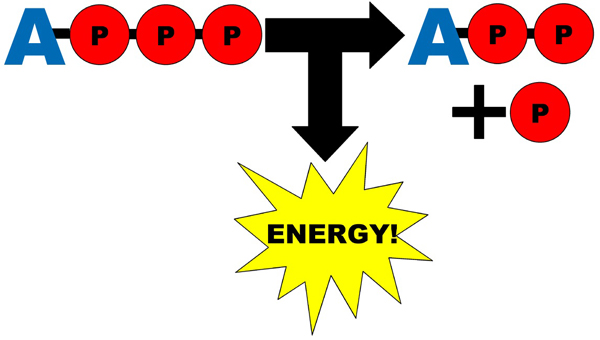
ATP (adenosine triphosphate) is a molecule made up of an adenine ring, a ribose sugar, and most importantly 3 phosphates. In the most basic terms, this molecule is the body’s currency for all of its functions. Anything that the body does requires energy which all comes from ATP.
The fats, carbs, and proteins that we eat are broken down and metabolized in order to replenish the used ATP in our bodies.
The diagram above shows basically how ATP produces energy. One of the phosphates breaks off and releases a burst of energy. When this happens the molecule turns into ADP (adenosine diphosphate) because there is only 2 phosphates attached. Through a series of reactions another phosphate is attached and the molecule becomes ATP again. The ATP in our bodies are recycled after they produce energy.
When fats are broken down they can create the most ATP. Glucose produces less, and proteins produce the least. The need for ATP dictates which source will be the primary supplier. This is why fats and carbs are used differently during high and low intensity training.
 About Adam Pegg
About Adam Pegg



